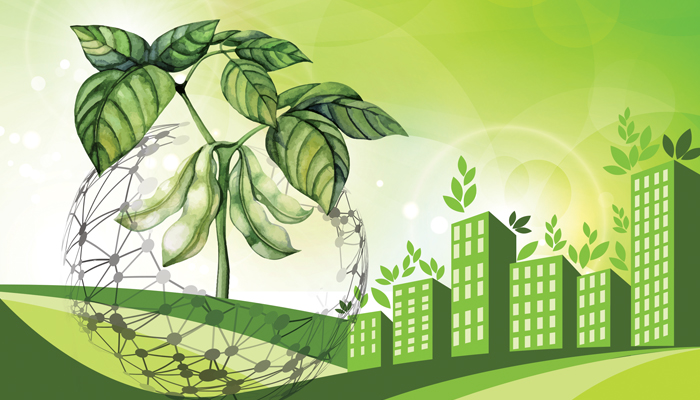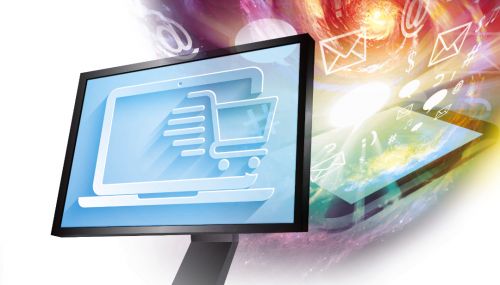All
How Green Is Your Marketing?
by Richard Rutigliano, PriMedia, Inc.

In the May issue, we talked about the challenges our industry is facing with the cultural and legislative shifts toward electric heat as the solution to climate change. That article focused on the collective efforts needed to educate legislators about Bioheat® fuel as an existing, readily-available, and lower cost component of the carbon-reduction battle.
Equally important is to promote Bioheat® fuel and biofuels to the public. The majority of heating oil consumers are already using some blend of Bioheat® fuel. And yet, the average consumer has virtually no knowledge or understanding of Bioheat® fuel and why it matters. It is in your hands to change that situation, and to position your company as the premier provider of this “wonder” fuel that can lower emissions without adding to end-user expenses. Every company moving, selling or storing biofuels needs to include “clean, green” messaging on every vehicle that bears their logos.
But it is the fuel dealers who are the face of our industry, and it is in their best interests to proudly wear the mantle of “low carbon, renewable energy.” Consumers are concerned about climate change and the dangers of carbon emissions. They are looking for green solutions. You have them. The company that positions itself as providing these solutions will stand apart.
Educate, educate, educate.
For the last two decades, the heating oil industry has been battling the misinformation spread by the natural gas utilities. The better-funded and government subsidized (via tax breaks and more) utilities spent billions of dollars to convince consumers that Oilheat was dirty, bad for the environment and expensive. And, as evinced by our shrinking market share, homeowners believed them.
But public opinion is turning away from the belief that natural gas is a “clean” energy, in large part due to calamities such as the Aliso Canyon leak and the Merrimack Valley Disaster. Concerns over pipeline safety, fracking and (finally) recognition of the dangers of methane have also been part of the shift. Public sentiment, however, has not turned to Bioheat® fuel. At least not yet.
Job one is to educate the consumer. We suggest you start with your customers and your community. Your customers need to know how beneficial Bioheat® can be to the environment. Transitioning to electric heating will reduce GHGs by only about 1.5 percent by 2035, and increase homeowner energy costs by as much as $910 per year. That’s good for the utilities and their stockholders, but it’s certainly not the panacea that it has been made out to be. On the other hand, moving from ULSD to B20 and eventually to a blend of ULSD, B50 and ethyl levulinate could reduce a home’s CO2 equivalent emissions by up to 95 percent by 2035! Now that’s something to get excited about.
Brand yourself green. Do your company logo, tag line and mission statement highlight your green, renewable corporate personality? Let your customers and neighbors know, from the first time they see your branding, that you and your business are firmly planted in the renewables camp.
Update your website. We cannot say this enough. Your website is your company brochure, salesperson, newsletter, and calling card. If you don’t already have a section on Bioheat® fuel, now is the time to add one! Current customers visit regularly to schedule deliveries and make payments. New customers visit to learn about your company. You should replace the word “Oilheat” with “Bioheat® fuel,” and go into detail about the available blend levels and their benefits. Explain about different biofuel feedstocks, experimental feedstocks like algae, and advanced biofuels made with ethyl levulinate (EL). Make sure your customers know that your biofuels will make their equipment work better without any retrofits or system modifications, but their older systems should be upgraded for increased efficiency. Liberally scatter banners and call-outs that feature information and images celebrating lower carbon emissions and renewable sources. Every impression a consumer has with your company needs to reinforce your green messaging.
Train your employees. Everyone in the company, from the CEO-emeritus to the warehouse stockperson and office intern, needs to fully understand Bioheat® fuel, your products, and why they matter. They should be able to answer questions about the difference between Bioheat® fuel and traditional heating oil as well as the differences between B10 and B20; confidently explain what feedstocks are most often used in your renewable biodiesel; know the difference between Bioheat® and corn ethanol; and demonstrate how your fuel reduces carbon emissions. They should also be able to talk to friends, family members and customers about carbon taxes and fees and what they will cost in real dollars for real people. A carbon tax may sound like a great idea to your neighbor when he thinks the utility company is paying it. The concept is much less appealing with the realization that he will be taxed hundreds of dollars a year for heating, hot water, and driving to work.
All your marketing, one message
No matter what tactics are included in your marketing program, the message needs to consistently reflect your green identity and your low carbon renewable fuels. This messaging needs to carry through even in “non-fuel” campaigns promoting new-customer offers or other company services.
Social media marketing: Target your advertising to consumers interested in the environment, global warming and home solutions. Content should revolve around your Bioheat® and biodiesel fuels, customer testimonials after efficiency upgrades and services, and your company’s commitment to completely environmentally friendly operations. Donations to and participation in charity fund raisers, community clean-up days, school programs and more should also be featured. In all efforts, personalize your brand while promoting your product.
Satellite radio and cable TV: Satellite radio offers the targeting capabilities of other digital media, and spot cable placements enable you to reach specific demographics based on viewers of a channel, network or program. Both options can also include mobile streaming platforms, putting your message wherever your customers are.
Email marketing: Monthly digital newsletters will reinforce your green message to existing and potential customers. Support your marketing of renewable fuels and energy efficient equipment with scientific studies showing how low carbon renewable fuels offer pathways to net-zero comfort. Bolster those with the data on how low carbon renewable fuels could reduce GHG emissions by 95 percent by 2035 but electrification by only 1.5 percent.
Customer Gifts: Imagine the impact of thanking every new customer with a small potted houseplant that will greet them with a green reminder of your company every day. Thank your returning customers as well, while preserving your budget, by dropping off a packet of wildflower seeds on their first delivery. Thoughtful, personal, green touches like these are remembered, and are shared on social media.
Walk the Walk
Consumers are looking for companies they can trust. When marketing your product as a green solution, you need to make sure that your company operations are sufficiently green, as well. Getting called out by the blogosphere for green-washing will lead to negative reviews and poor company reputation! Consider business policies that reduce waste, like these:
Paperless billing: Go digital. Paperless saves printing and postage costs and unfetters your staff from stuffing, sealing, and shipping. PossiBill™, PriMedia’s digital print and presentment platform pulls the data directly from your enterprise software, and can process payments as well.
Digital portals: You have printed service contracts, credit applications, price protection renewals, holiday cards and more! With an integrated customer self service portal, these can all be digitized and securely processed online, with the added bonus of providing your customers the freedom to manage their accounts on their time. Of course, you will need alternative (printed) materials for customers who are not comfortable with the digital process, but these should be a small percentage of the total.
Delivery trucks, service vans and sales fleets: Your company vehicles should be using biodiesel, and this needs to be promoted, loudly, in your communications. It will not only enhance your “green reputation,” but also reassure customers of the safety of using biofuels.
Reinforcement of the message is the key.
Every interaction between your company and the public should reinforce the message that yours is “the” green company, and that your Bioheat®, biodiesel and other fuels offer the best path toward a net-zero carbon future. More than that, your business model has to represent your environmental mission, from top to bottom. When customers trust that the company they support is truly committed to their cause, they are more loyal and less concerned about price. You have the opportunity to be the company that locks in these customers, and promotes a better future for us all at the same time.
PriMedia has been helping companies align their business operations and staff training for more than 25 years, and has promoted the benefits of Bioheat® fuel since its development. Contact us at 800-796-3342 or goprimedia.com to learn more about our branding and marketing services, and how we can help your company go green.
Related Posts
 Show Your Work
Show Your Work
Posted on April 17, 2024
 Beyond the Gateway
Beyond the Gateway
Posted on March 12, 2024
 Fill Your Idea Parking Lot for 2024
Fill Your Idea Parking Lot for 2024
Posted on February 12, 2024
 Known Knowns and Unknown Unknowns
Known Knowns and Unknown Unknowns
Posted on December 7, 2023
Enter your email to receive important news and article updates.
